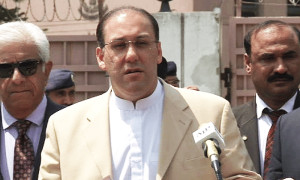PkRevolution
Chief Minister (5k+ posts)
BBC News 17.01.2014

<font size="5">
"I've been a solar physicist for 30 years, and I've never seen anything quite like this," says Richard Harrison, head of space physics at the Rutherford Appleton Laboratory in Oxfordshire.
He shows me recent footage captured by spacecraft that have their sights trained on our star. The Sun is revealed in exquisite detail, but its face is strangely featureless."If you want to go back to see when the Sun was this inactive... you've got to go back about 100 years," he says.This solar lull is baffling scientists, because right now the Sun should be awash with activity.
The Sun's activity may be falling faster than at any time in 10,000 years
It has reached its solar maximum, the point in its 11-year cycle where activity is at a peak.This giant ball of plasma should be peppered with sunspots, exploding with flares and spewing out huge clouds of charged particles into space in the form of coronal mass ejections.
But apart from the odd event, like some recent solar flares, it has been very quiet. And this damp squib of a maximum follows a solar minimum - the period when the Sun's activity troughs - that was longer and lower than scientists expected."It's completely taken me and many other solar scientists by surprise," says Dr Lucie Green, from University College London's Mullard Space Science Laboratory.The drop off in activity is happening surprisingly quickly, and scientists are now watching closely to see if it will continue to plummet."It could mean a very, very inactive star, it would feel like the Sun is asleep... a very dormant ball of gas at the centre of our Solar System,"
explains Dr Green.
This, though, would certainly not be the first time this has happened.During the latter half of the 17th Century, the Sun went through an extremely quiet phase - a period called the Maunder Minimum.Historical records reveal that sunspots virtually disappeared during this time.Dr Green says: "There is a very strong hint that the Sun is acting in the same way now as it did in the run-up to the Maunder Minimum."Mike Lockwood, professor of space environment physics, from the University of Reading, thinks there is a significant chance that the Sun could become increasingly quiet.An analysis of ice-cores, which hold a long-term record of solar activity, suggests the decline in activity is the fastest that has been seen in 10,000 years."It's an unusually rapid decline," explains Prof Lockwood.
Read More:
http://www.bbc.co.uk/news/science-environment-25743806



<font size="5">
"I've been a solar physicist for 30 years, and I've never seen anything quite like this," says Richard Harrison, head of space physics at the Rutherford Appleton Laboratory in Oxfordshire.
He shows me recent footage captured by spacecraft that have their sights trained on our star. The Sun is revealed in exquisite detail, but its face is strangely featureless."If you want to go back to see when the Sun was this inactive... you've got to go back about 100 years," he says.This solar lull is baffling scientists, because right now the Sun should be awash with activity.
The Sun's activity may be falling faster than at any time in 10,000 years
It has reached its solar maximum, the point in its 11-year cycle where activity is at a peak.This giant ball of plasma should be peppered with sunspots, exploding with flares and spewing out huge clouds of charged particles into space in the form of coronal mass ejections.
But apart from the odd event, like some recent solar flares, it has been very quiet. And this damp squib of a maximum follows a solar minimum - the period when the Sun's activity troughs - that was longer and lower than scientists expected."It's completely taken me and many other solar scientists by surprise," says Dr Lucie Green, from University College London's Mullard Space Science Laboratory.The drop off in activity is happening surprisingly quickly, and scientists are now watching closely to see if it will continue to plummet."It could mean a very, very inactive star, it would feel like the Sun is asleep... a very dormant ball of gas at the centre of our Solar System,"
explains Dr Green.
This, though, would certainly not be the first time this has happened.During the latter half of the 17th Century, the Sun went through an extremely quiet phase - a period called the Maunder Minimum.Historical records reveal that sunspots virtually disappeared during this time.Dr Green says: "There is a very strong hint that the Sun is acting in the same way now as it did in the run-up to the Maunder Minimum."Mike Lockwood, professor of space environment physics, from the University of Reading, thinks there is a significant chance that the Sun could become increasingly quiet.An analysis of ice-cores, which hold a long-term record of solar activity, suggests the decline in activity is the fastest that has been seen in 10,000 years."It's an unusually rapid decline," explains Prof Lockwood.
Read More:
http://www.bbc.co.uk/news/science-environment-25743806


Last edited by a moderator:





































